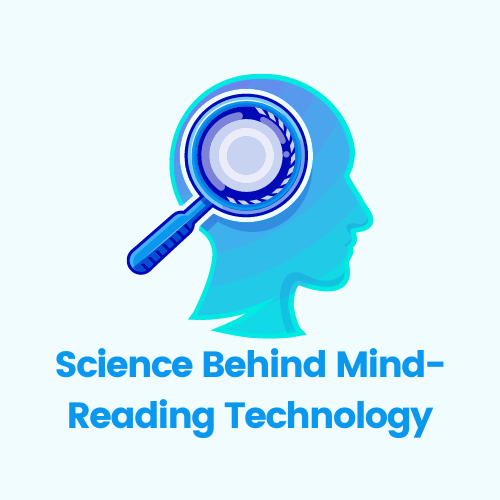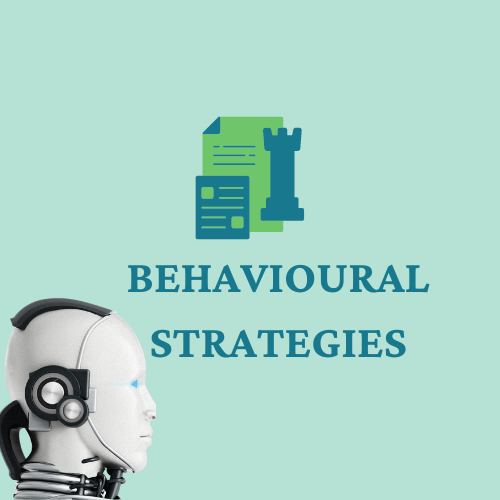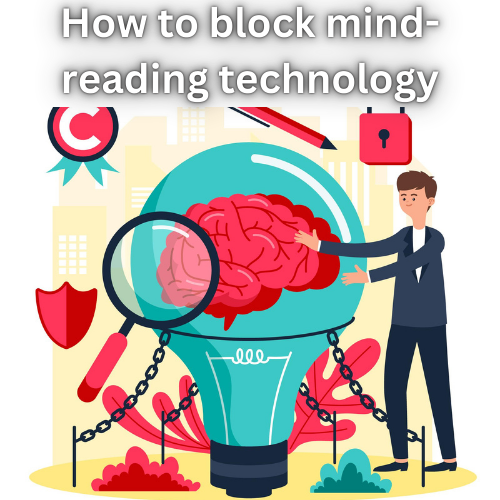introduction of block mind-reading technology
Contemplate the opportunity of residing in a society in which an individual could access the own thoughts. That is quite frightening, is it not? With the rapid advancement of mind-reading technology, this is no longer merely the material of science fiction. To the protection your privacy and guarantee that your opinions are your own, it is indispensable to comprehend how to barricade the block mind-reading technology.
- What is the definition of mind-reading technology?
- The Science Behind Mind-Reading Technology
- Potential hazards and moral considerations
- Identifying Indicators of Potential Targeting Signs of Being a Target
- Establishing a Protected Setting
- Physical Barriers and Effectiveness
- Technological Solutions
- Behavioural strategies
- In conclusion
What is the definition of mind-reading technology?
Fundamental Principles of Mind-Reading Technology The term “mind-reading technology” refers to the tools and devices that are designed to interpret and interpret human judgments. Through these technologies, brain-computer interfaces (BCIs) are capturing and analyzing EEG patterns, thereby converting them into expressive data.
The Science Behind Mind-Reading Technology

The Operation of Mind-Reading Technology
Sensors are usually placed on the cranium to detect electrical activity in the brain, which is the typical method of mind-reading technology. These signals are then administered using sophisticated algorithms to interpret the data and infer judgments or intentions.
Electroencephalography (EEG), functional magnetic resonance imaging (fMRI), and near-infrared spectroscopy (NIRS) are technologies that are universally employed in mind-reading applications. The accuracy and inappropriateness of these methodologies are inconsistent.
Potential hazards and moral considerations
Personal information protection and the right to privacy are concerns.
The ability to gain access to and comprehend an individual’s thoughts without their permission raises serious privacy concerns. Disclosure of personal ideas could result in unlawful data exploitation, manipulation, or extortion. Preserving mental privacy is crucial for maintaining individual liberty and ensuring security.
Ethical ramifications
The use of mind-reading technology raises a variety of ethical concerns about consent and the possibility of misuse. The ability to comprehend thoughts poses a challenge to our understanding of personal limits and mental well-being, necessitating strong ethical principles and safeguards.
Psychological impacts
The awareness that one’s thoughts may be accessible might result in increased anxiety, paranoia, and a diminished sense of mental autonomy. These psychological consequences emphasize the need for effective remedies to safeguard mental privacy.
Identifying Indicators of Potential Targeting Signs of Being a Target
Assessing if you are the subject of mind-reading technologies might provide challenges
Indications include atypical disruption of cognitive processes, unexpected responses from others suggesting they may possess knowledge of your thoughts, and a continual sense of being under surveillance.
Typical Scenarios for Mind-Reading Technology Mind-reading technology might be used in high-security settings, intensive discussions, or circumstances where personal information has substantial importance. Gaining an understanding of these circumstances might assist people in staying alert and implementing precautionary actions.
Establishing a Protected Setting
Minimizing the use of brain activity monitoring devices
In order to provide a safe setting, it is crucial to restrict access to equipment that have the capability to possibly interpret brain signals. This entails using prudence while utilizing wearable technology that tracks brain signals and ensuring that personal areas are devoid of illegal surveillance equipment.
Ensuring the Security of Personal Space
Implementing effective security measures in your own environment may greatly mitigate the possible threat of unwanted surveillance of your brain activity. This may include the use of physical obstacles, such as materials designed to prevent the transmission of incoming signals.
Physical Barriers and Effectiveness
Physical barriers refer to obstacles or structures that prevent or hinder the movement or access of people, objects, or substances. The effectiveness of physical barriers is determined by their ability to successfully impede or restrict such movement or access.
Faraday cages
Blocking electromagnetic signals using Faraday cages may be a useful strategy to stop brain data from being sent. Although they may not be suitable for regular usage, they provide strong defiance in situations with a high level of danger.
Practicality and constraints
Although physical barriers such as Faraday cages are useful, they have limits, especially in terms of practicality for everyday use. However, they continue to be a viable choice for situations that need high levels of security.
Technological Solutions
Technological solutions refer to the use of progressive tools, techniques, and the systems to address or solve problems. These explanations include the use of technology to provide resourceful and effective ways of achieving desired consequences.
Application of Jammers and Signal Blockers
Jammers and signal blockers have the capability to interfere with the transmission of cerebral signals, hence impeding mind-reading equipment from obtaining brain data. These gadgets are very beneficial in hazardous circumstances, since they guarantee the confidentiality of personal ideas
Cryptography and Cybersecurity Measures
Utilizing encryption techniques on brain data and employing secure communication routes may effectively safeguard against illegal access. Advanced encryption techniques guarantee that intercepted data remains unintelligible, hence enhancing security.
Behavioural strategies

Mental Conditioning for Resistance
Developing the ability to counteract mind-reading technologies requires the practice of mindfulness and the cultivation of mental discipline. By cultivating mindfulness and exerting cognitive control, you can safeguard critical information from unauthorized access.
Cognitive Strategies for Thought Defence
Utilizing cognitive tactics such as redirecting ideas and compartmentalizing the mind may effectively protect one’s thoughts. To safeguard confidential information from being deciphered by mind-reading technology, humans might use the strategy of directing their attention towards neutral or decoy ideas.
In conclusion
There are substantial privacy and ethical issues that are presented by mind-reading technologies. It is possible for people to secure their mental privacy by first gaining a knowledge of how this technology operates and then immediately putting in place thorough defensive measures. More advanced mind-reading technologies are surely going to be developed in the future; but, if we are aware of these developments and are well-prepared, we may remain one step ahead of them and keep control of our thoughts.
How to make vision board on computer.

[…] the current era the technology worked very rapidly in the world due to this the artificial intelligence system and as well as the […]